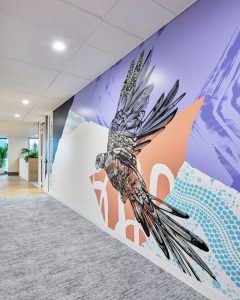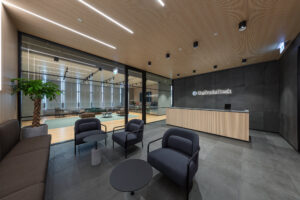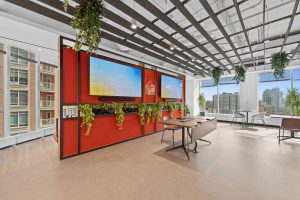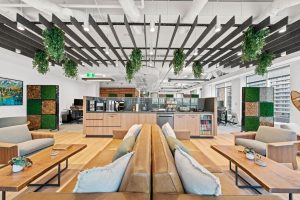Complete Guide to LEED Certification for Office Spaces in Singapore.
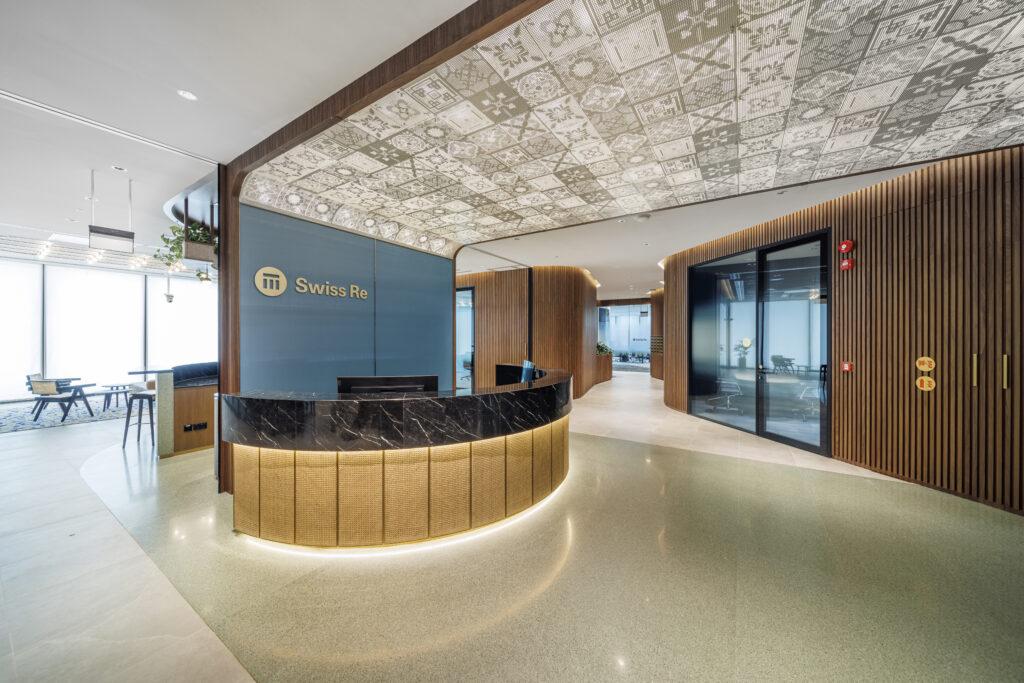
Everything you need to know about achieving LEED certification for your Singapore office, from requirements and costs to timelines and ROI. Based on real projects including Fidelity International and Swiss Re Singapore.
LEED vs Green Mark: Comparison and Strategy
Many Singapore projects pursue both LEED and Green Mark certification. Understanding similarities, differences, and strategic considerations informs certification approach.
System Comparison
| Aspect | LEED | Green Mark |
|---|---|---|
| Administering Body | USGBC (US Green Building Council) – International | BCA (Building & Construction Authority) – Singapore |
| Global Recognition | Strong – 180+ countries, 100,000+ certified projects | Limited – Primarily Singapore and some Southeast Asian recognition |
| Singapore Market Recognition | Strong among multinationals, less among local SMEs | Very Strong – Government preference, local market standard |
| Certification Levels | Certified, Silver, Gold, Platinum (40-49, 50-59, 60-79, 80+ points) | Certified, Gold, GoldPLUS, Platinum (50-74, 75-84, 85-94, 95+ points) |
| Focus Areas | Energy, Water, Materials, IEQ, Innovation | Energy, Water, Environmental Protection, IEQ, Other Green Features |
| Climate Specificity | Global framework with regional priority credits | Specifically designed for Singapore tropical climate |
| Documentation Language | English only | English (some Chinese documentation accepted) |
| Certification Fees | USD 3,700-7,000 (~SGD 5,000-9,500) | SGD 1,000-3,000 (significantly lower) |
| Review Timeline | 10-16 weeks typical | 8-12 weeks typical |
| Government Incentives | Limited (enhanced tax deductions for dual certification) | Strong (Green Mark Incentive Scheme, preferential government tendering) |
| Recertification | Not required (certification permanent) | Required every 3 years |
| Energy Modeling | Requires detailed ASHRAE 90.1 comparison | Uses Singapore-specific baseline (SS 530 or SS 554) |
Dual Certification Strategy
Projects like Swiss Re and Fidelity International pursuing both LEED and Green Mark benefit from:
- Comprehensive Market Appeal: LEED satisfies multinational corporate requirements while Green Mark demonstrates commitment to Singapore sustainability framework
- Government Relations: Green Mark certification supports government tender evaluations and demonstrates alignment with Singapore sustainability initiatives
- Overlapping Requirements: Both systems evaluate similar sustainability categories enabling documentation efficiency. Approximately 60-70% of documentation overlaps between systems
- Risk Mitigation: If one certification encounters challenges, the other provides sustainability credential
- Market Differentiation: Dual certification positions project in top tier of sustainable office spaces (less than 15% of Singapore offices hold both certifications)
Single Certification Decision Framework
When budget or timeline constraints necessitate single certification, consider:
Choose LEED if:
- Tenant is multinational corporation with global LEED mandate
- Project part of international portfolio requiring consistent standards
- ESG reporting emphasises international frameworks
- Target tenants are international companies familiar with LEED
- Project seeks global sustainability recognition
Choose Green Mark if:
- Primary tenants are Singapore-based or regional companies
- Government incentives and tender opportunities are priorities
- Ongoing recertification demonstrates continued commitment (required every 3 years)
- Lower certification costs important (Green Mark fees 40-50% lower)
- Tropical climate-specific standards preferred
Phased Certification Approach
Some projects pursue initial certification with infrastructure supporting future second certification:
- Achieve Green Mark first (faster review, lower cost) establishing sustainability foundation
- Design systems and collect documentation supporting potential future LEED pursuit
- Add LEED certification when business case strengthens (new tenant requirements, enhanced market positioning)
- This approach spreads investment over time while maintaining certification optionality
How to Get Started with LEED Certification
Successfully pursuing LEED certification requires early planning, team assembly, and strategic decision-making. Follow this roadmap to launch your LEED journey.
Step 1: Establish Certification Goals and Business Case
Define Objectives: Clarify why you’re pursuing LEED certification. Common drivers include:
- Corporate sustainability policy requirements
- Tenant attraction and market differentiation
- Operational cost reduction through energy efficiency
- ESG reporting and stakeholder communications
- Employee attraction and retention in competitive talent market
- Future-proofing against environmental regulations
Select Target Level: Determine appropriate certification level based on:
- Budget availability for sustainability premiums
- Corporate sustainability ambitions and policies
- Market positioning objectives (Gold/Platinum for premium market leadership)
- Timeline constraints (higher levels require more extensive commissioning and documentation)
- Base building infrastructure supporting certification (projects in LEED/Green Mark buildings have advantages)
Develop Business Case: Prepare internal business case including:
- Total investment required (soft costs + hard cost premiums)
- Operational savings projections (energy, water, maintenance)
- Market benefits (rental premium, leasing velocity, property value)
- Talent advantages (recruitment, retention, productivity)
- ESG and risk management value
- Payback period and ROI analysis
Step 2: Assemble Project Team
Core Team Members:
- LEED Consultant: Hire accredited consultant with Singapore experience. Request proposals from 2-3 firms, interview references from similar projects, verify LEED AP credentials, and review past project certifications and levels achieved. Budget SGD 35,000-60,000 for comprehensive services.
- Architect: Engage architect experienced in sustainable design, preferably with LEED project experience. Architect leads spatial design, coordinates with consultants, and manages design documentation supporting LEED requirements.
- MEP Engineer: Critical for energy and water efficiency strategies. MEP engineer should have experience with Singapore tropical climate systems, energy modeling capabilities, and familiarity with high-performance HVAC, lighting, and plumbing systems.
- Contractor: Select contractor with LEED project experience including waste management, material documentation, and indoor air quality protection. Request LEED experience details during contractor selection including specific roles (new construction, renovation, interior), projects completed, certification levels achieved, and lessons learned.
- Commissioning Agent (if pursuing enhanced commissioning): Independent third-party verifying systems perform as designed. Select agent early for involvement throughout design and construction.
Project Stakeholders:
- Corporate sustainability leadership providing policy guidance and approval
- Facilities management representing ongoing operations and maintenance perspective
- IT/technology team for building systems integration requirements
- HR/workplace leadership ensuring design supports employee needs
- Finance team managing budget and approvals
Step 3: Register Project and Conduct Integrated Workshop (Week 4)
LEED Registration:
- Register project through USGBC LEED Online platform
- Complete project information including location, size, occupancy type, and target certification level
- Pay registration fee (USD 1,200-2,000 depending on project size and USGBC membership)
- Establish team access to LEED Online for documentation collaboration
Integrated Design Workshop:
Conduct full-day workshop with all key team members to:
- Review LEED requirements and credit opportunities
- Develop preliminary scorecard identifying target credits and point projections
- Identify synergies where one strategy supports multiple credits
- Discuss budget implications and value engineering opportunities
- Assign credit responsibility to specific team members
- Establish documentation protocols and templates
- Define project schedule integrating LEED milestones
This workshop proves critical for project success by establishing shared understanding, identifying early opportunities, and creating team alignment around sustainability objectives.
Step 4: Integrate Sustainability into Design Process (Ongoing)
Schematic Design Phase:
- Conduct preliminary energy modeling evaluating system options
- Establish spatial organisation supporting daylight and views
- Research sustainable material options for major systems (flooring, ceilings, furniture)
- Review building access to public transportation for Location credits
- Begin populating LEED Online with design narrative and preliminary documentation
Design Development Phase:
- Finalize major systems selections (HVAC, lighting, plumbing)
- Complete detailed energy modeling with iterative optimisation
- Specify key materials meeting LEED requirements
- Conduct daylighting analysis if pursuing daylight credits
- Develop commissioning plan if pursuing commissioning credits
- Continue LEED Online documentation with design development drawings and specifications
Construction Documents Phase:
- Finalize all specifications with LEED requirements integrated
- Prepare contractor coordination documents detailing LEED expectations
- Develop waste management plan and indoor air quality management plan
- Create material submittal requirements and templates
- Brief contractor on LEED documentation requirements
Step 5: Execute and Document Construction (Construction Phase)
Regular Coordination:
- Conduct bi-weekly LEED coordination meetings reviewing progress, upcoming submittals, and documentation status
- Review material submittals for LEED compliance before approving for installation
- Monitor waste management implementation with regular waste tracking reports
- Verify indoor air quality protection measures throughout construction
- Maintain photographic record of sustainable features installation
Commissioning Activities:
- Commissioning agent attends key construction milestones
- Conduct functional performance testing of all commissioned systems
- Document deficiencies and verify corrections
- Prepare commissioning reports for LEED submission
Step 6: Prepare and Submit Certification Application (Pre-Occupancy)
Documentation Compilation (6-8 weeks before occupancy):
- Gather all required documentation in LEED Online
- Complete calculations for energy, water, and materials credits
- Organize product data, certifications, and chain of custody documentation
- Prepare narrative responses explaining credit achievement strategies
- Upload commissioning reports, waste tracking data, and installation photos
Quality Review:
- LEED consultant conducts comprehensive review checking completeness and accuracy
- Verify all calculations and ensure documentation consistency
- Review narrative responses for clarity and completeness
- Confirm all required forms completed and signed
Final Submission:
- Submit complete application through LEED Online
- Pay certification review fee
- Await initial review (4-5 weeks typical)
Step 7: Respond to Review and Achieve Certification
Review Process:
- Receive initial review comments from USGBC reviewer
- Coordinate team response to any clarifications or additional documentation requests
- Submit responses within 25 business day deadline
- Await final review (3 weeks typical)
- Consider appeal if necessary for any credits denied
Certification Achievement:
- Receive official certification notification with final score and certification level
- Order physical certification plaque for display
- Develop internal and external communications announcing certification
- Incorporate certification into marketing materials and ESG reporting
- Celebrate achievement with project team and building occupants
Step 8: Leverage Certification and Maintain Performance
Communications and Marketing:
- Issue press release announcing certification achievement
- Update corporate website and marketing materials with LEED credentials
- Include certification in tenant communications and recruitment materials
- Leverage certification in ESG reporting and stakeholder communications
- Participate in industry conferences and case studies sharing lessons learned
Performance Monitoring:
- Implement ongoing energy and water monitoring tracking actual vs predicted performance
- Conduct post-occupancy evaluation surveying occupant satisfaction
- Use building management systems for continuous optimisation
- Maintain documentation of ongoing sustainable operations
- Consider LEED O+M (Operations and Maintenance) certification for ongoing performance recognition
Ready to Pursue LEED Certification for Your Singapore Office?
LEED certification represents strategic investment delivering measurable returns through operational savings, market positioning, talent advantages, and ESG credentials. Whether pursuing your first LEED project or adding to certified portfolio, expert guidance proves essential for navigating certification complexities and optimising outcomes.
Facilitate brings comprehensive experience managing LEED projects in Singapore including Fidelity International’s Platinum pursuit and Swiss Re’s dual LEED-Green Mark certification. Our integrated project management approach encompasses sustainability strategy development, consultant coordination, design and construction management, and certification documentation ensuring your project achieves sustainability objectives while meeting budget and schedule requirements.
Our LEED Project Services Include:
- Sustainability goal-setting and business case development
- LEED consultant procurement and coordination
- Integrated design process facilitation
- Design and construction management with sustainability focus
- Documentation management and quality assurance
- Building systems commissioning coordination
- Certification submission support and USGBC coordination
- Post-certification performance monitoring
Contact us to discuss your Singapore office LEED certification goals and learn how our project management expertise can deliver successful sustainable workplace outcomes.
